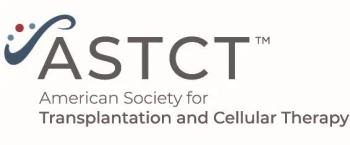
Magnetic Resonance–Guided Radiation May Be Beneficial in Nonmetastatic PDAC
Stereotactic online adaptive magnetic resonance–guided radiation therapy was well tolerated and maintained stable QOL in patients with PDAC for up to 1 year.
The use of stereotactic online adaptive magnetic resonance–guided radiation therapy (MRgRT) correlated with improved disease-related symptoms, stable functioning, and minimal toxicity up to 12 months following treatment in patients with nonmetastatic pancreatic ductal adenocarcinoma (PDAC), according to results from the observational MOMENTUM study (NCT04075305) published in the International Journal of Radiation Oncology, Biology, and Physics.
Of 67% of patients (n = 85 of 127) who completed questionnaires at baseline, 61% (n = 59 of 96) who completed it at 3 months, 70% (n = 42 of 60) who completed it at 6 months, and 71% (n = 22 of 31) who completed it at 12 months, no clinically relevant deterioration was found in functional quality-of-life (QOL) domains.
At 6 months of follow-up, a clinically relevant and statistically significant improvement was observed for nausea and vomiting (mean difference [MD], −10; 95% CI, −17 to −3; P < .001). It was noted that appetite did not demonstrate a statistically significant improvement but was clinically meaningful at 6 months (MD, −12; 95% CI, −25 to 2; P < .12). At 12 months of follow-up, there were clinically relevant, though not statistically significant, deteriorations of global health score (MD, −11; 95% CI, −23 to 1; P = .08), pain (MD, 13; 95% CI, −4 to 26; P = .25), and diarrhea (MD 11; 95% CI, −4 to 26; P = .25).
When censoring patients with disease progression, there was neither statistically significant nor clinically relevant deterioration in all QOL domains. Appetite showed clinically relevant improvement at 3 months (MD, −10; 95% CI, −24 to 3; P < .20). Nausea and vomiting (MD, −11; 95% CI, −18 to −3; P < .001) and appetite (MD, −14; 95% CI, −28 to 0; P = .05) continued to show an improvement of statistical significance and clinical meaningfulness at 6 months of follow-up.
For patients treated with an ablative dose of 50 Gy, a clinically relevant and statistically significant improvement for nausea and vomiting was found at 3 months (MD, −11; 95% CI, −21 to 0; P = .04) and 6 months (MD, −14; 95% CI, −24 to −4; P < .001) of follow-up. A clinically relevant but not statistically significant deterioration of pain was observed at 12 months of follow-up (MD, 11; 95% CI, −3 to 34; P = .63); the same was seen for improvement of appetite at 3 months (MD, −13; 95% CI, −32 to 5; P = .23) and 6 months (MD, −16; 95% CI, −34 to 2; P = .09), global health score at 3 months (MD, 12; 95% CI, −2 to 25), and emotional functioning (MD, 10; 95% CI, −5 to 25; P = .31) and constipation (MD, −10; 95% CI, −26 to 7; P = .44) at 12 months of follow-up.
“Stereotactic MRgRT for patients with nonmetastatic PDAC is associated with stable QOL and improved disease-related symptoms up to 1 year after treatment. The treatment is deemed to be well tolerated, reflected by low clinician-reported toxicity,” wrote senior study author William A. Hall, MD, professor and chair of radiation oncology, medical director of Froedtert Radiation Oncology, and Bob Uecker Endowed Chair in the Department of Surgery at the Medical College of Wisconsin, wrote in the paper with coauthors. “This suggests that the impact of stereotactic MRgRT on QOL is minimal and possibly beneficial, which supports further investigation in a randomized setting.”
The trial identified a total of 155 patients with nonmetastatic PDAC from the MOMENTUM database, and 127 of them provided informed consent to receive QOL questionnaires and be included in further analysis.
Per MOMENTUM requirements, all patients were 18 years or older, scheduled to have treatment on the 1.5T MR-Linac, and provided informed consent for cohort enrollment. In this study, patients had histologically proven primary or recurrent PDAC based on pathologic confirmation or imaging diagnosis, with no history of distant metastatic PDAC, which was treated with stereotactic radiation therapy defined as 5 treatment fractions or less according to local standard practices. Additionally, patients received MRgRT between May 2018 and December 2023.
The main outcomes of this trial were patient-reported QOL and clinician-reported toxicity measured at baseline, 3 months, 6 months, and 12 months.
Regarding safety, at baseline, 3 months, 6 months, and 12 months, toxicity was prospectively captured in 72% of patients, 67%, 45%, and 42%, respectively. Of grade 3 toxicities, abdominal pain occurred in 2 patients within 3 months, anorexia occurred in 1 patient during pretreatment and 3 months of follow-up, and fatigue occurred in 1 patient between 6 and 12 months of follow-up; the overall acute and late grade 3 toxicity rate was 3% to 5% and 3% to 8%. There were no grade 4 toxicities observed.
Reference
Westerhoff JM, Scheepens JCM, van Wolffelaar FF, et al. Quality of life and toxicity in patients with pancreatic ductal adenocarcinoma treated with online adaptive stereotactic magnetic resonance guided radiation therapy. Int J Radiat Oncol Biol Phys. 2025;122(3):698-708. doi:10.1016/j.ijrobp.2025.03.046
Newsletter
Stay up to date on recent advances in the multidisciplinary approach to cancer.





















































































